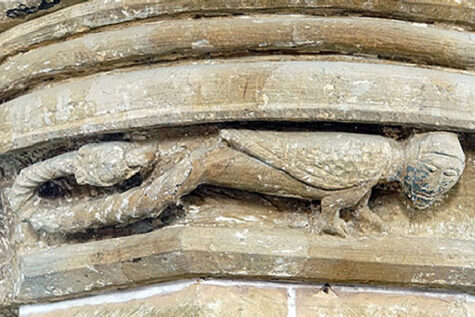In the 13th century, Burton Dassett became the site of a flourishing market town. After the plague, the market declined, and at the end of the 15th century, the place was deserted. Open area excavations have uncovered the history and layout of the small market town.
Burton Dassett Southend, Warwickshire: A Medieval Market Village
By Nicholas Palmer and Jonathan Parkhouse
Taylor & Francis 2023
ABSTRACT:

Open area excavations at Southend investigated parts of ten medieval properties. There was some prehistoric and Romano-British activity, with evidence for woodland regeneration and subsequent clearance in the post-Roman period, despite the Feldon area being one often considered to have little in the way of tree cover since the Roman period. The main period of occupation lasted from the mid-13th century to the late 15th century, reflecting the rise and decline of Chipping Dassett. Over 20 complete plans of houses and outbuildings were recorded, exhibiting a range of building techniques. The remains were well preserved, the surviving stratigraphy protected by demolition rubble. In most houses, successive building phases were revealed, and many internal features survived. For example, a door jamb inscribed with the name of a tenant family, ‘Gormand,’ suggests a degree of functional literacy. One of the properties was recognised as a smithy during the excavation, and a pioneering sampling and analysis of the ironworking evidence was carried out. The site was also sampled extensively for charred plant remains and, unusually for Warwickshire with its slightly acid soils, a large assemblage of animal bone was collected. Work on these provides direct evidence of medieval agricultural practice to be compared with the local historical evidence.

The large quantities of finds recovered, probably the largest assemblage from a medieval rural settlement in the West Midlands, enable the reconstruction of the material culture of a late medieval Warwickshire Feldon village.
Although the excavated area lay away from the original settlement nucleus, the investigation revealed the mechanics of 13th-century market development with two separate stages of planned development apparent. After the mid-14th century, the tenements show a complex pattern of decline leading up to the depopulation of 1497. The different properties followed varying development paths and the excavations chart a process of general community decline against a background of increasing individual prosperity. The evidence of material culture and settlement morphology, taken together, are relevant to the discussion about differentiation and similarities between urban and rural settlements. The medieval pottery has been crucial to developing the Warwickshire type series. Identification of the pottery sources provides evidence for trade connections between the settlement and the wider market network, with the quantities of material from the Chilvers Coton kilns suggesting that manorial connections with North Warwickshire, where the Sudeley family also held land, were significant. The summary narrative and thematic discussions (focused upon material culture, spatial organisation, buildings and economy) in this volume are supplemented by detailed stratigraphic descriptions and specialist reports available online through the Archaeology Data Service.
FEATURED PHOTO:
Burton Dassett Hills View. Source: Wikipedia/Geograph.org/Gordon Griffiths
SEE MORE:
Burton Dassett Excavations: A Digital Supplement to ‘Burton Dassett Southend, Warwickshire: a Medieval Market Village’ by N. Palmer and J. Parkhouse
Archaeology Warwickshire, 2022.
The website holds a collection of photos and other material documenting the archaeological excavations at Burton Dassett Southend”. The collection supports the narrative published in N. Palmer and J. Parkhouse’ Burton Dassett Southend, Warwickshire: a medieval market village’ (Society for Medieval Archaeology Monograph). The print volume, which is ‘part 1’ of the dissemination of the Burton Dassett Southend project, is a free-standing narrative which contains introductory material (including the local archaeological and historical contexts), a summary of the structural evidence, organised by phase, discussion and analysis of the settlement’s material culture, spatial organisation, buildings and economy, a concluding chapter and bibliography.
The collection deposited with The Archaeology Data Service is ‘part 2’ of the Burton Dassett Southend publication. It includes the detailed ‘level 3’ structural narrative, organised by area, together with the specialist contributions which underpin the printed volume and the composite bibliography for both the print volume and the digital downloads.
Of particular note is the large artefact assemblage, including the pottery, which was a significant component of the Warwickshire Pottery Type Series. The archaeometallurgical analyses represent one of the most detailed analyses of a medieval smithy.
Warwickshire Museum holds the full original archive including all site records and artefacts

